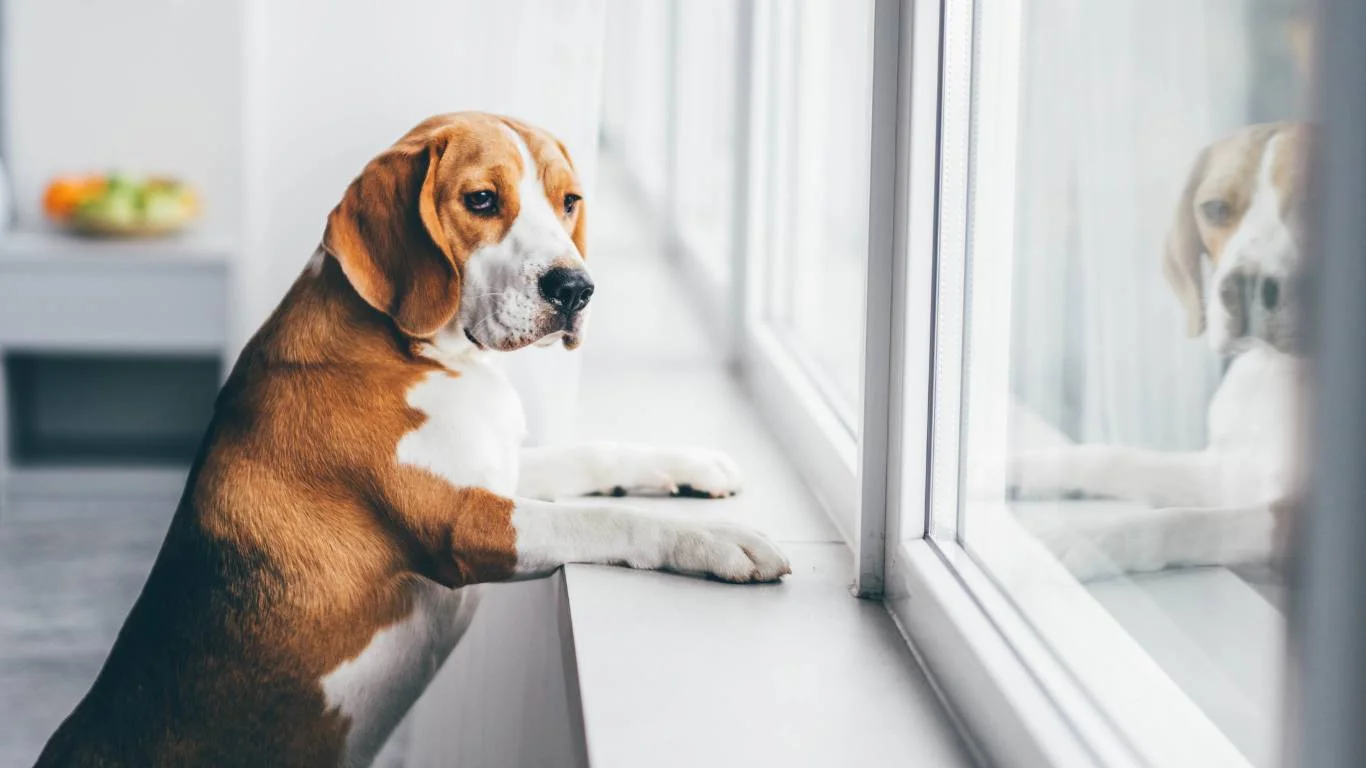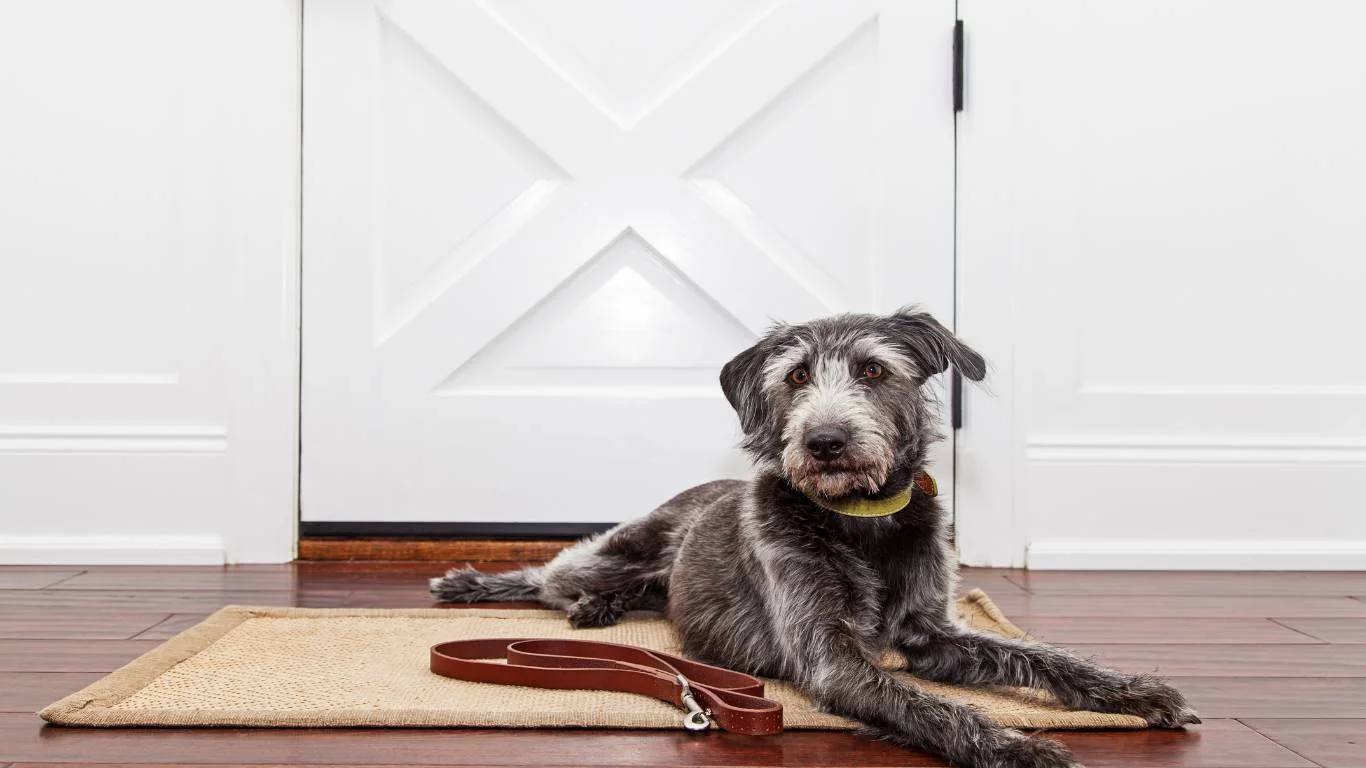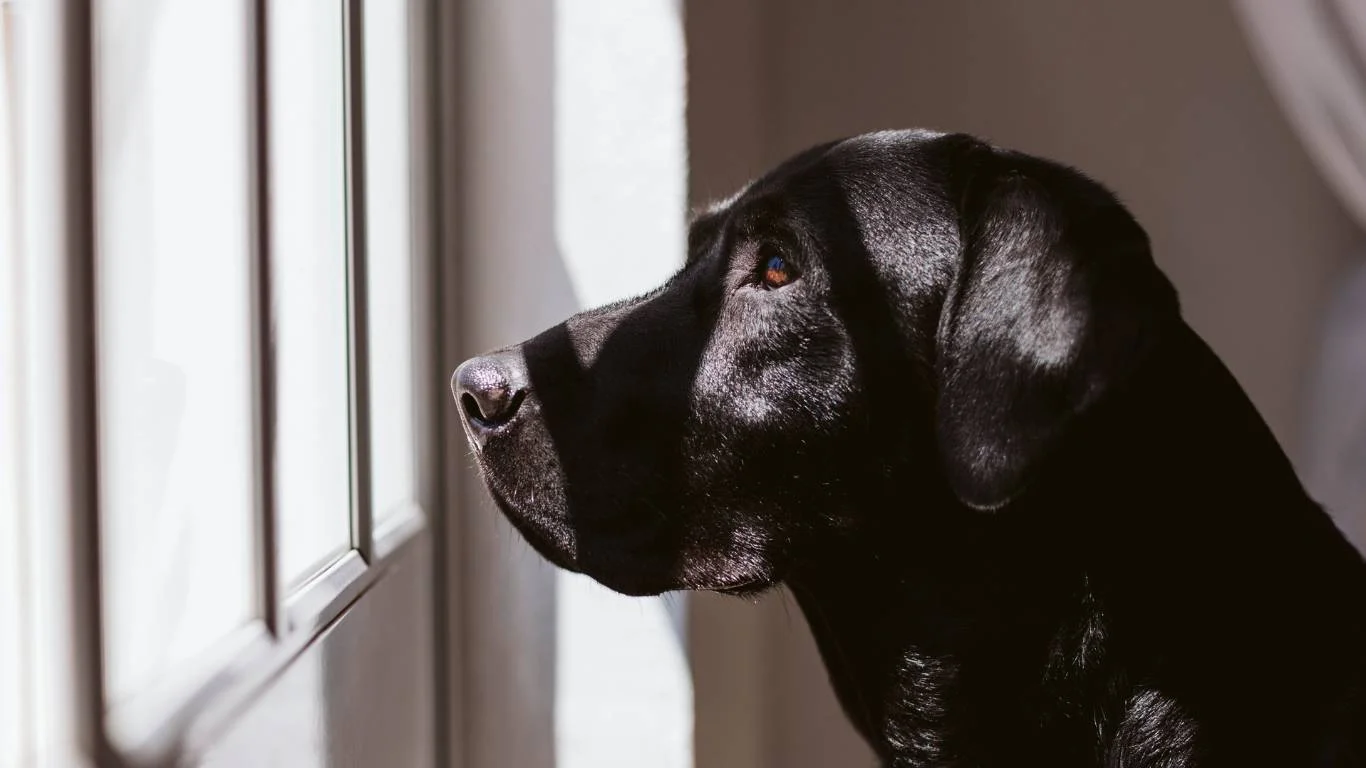Best Home Remedies for Dog Paw Infections That Actually Work
As a pet nutritionist and someone who has spent years in veterinary clinics, I’ve seen my fair share of concerned pet parents walk in with a limping pup, wincing at every step. If you’re searching for the best home remedies for dog paw infections, you’re in the right place. Paw infections are more common than many realize, and the good news? There are plenty of natural, effective ways to help your furry friend heal—without immediately resorting to antibiotics.
Understanding Dog Paw Infections: Causes & Symptoms

Paw infections can sneak up on dogs, and they can be incredibly uncomfortable. From my experience working with veterinarians, the most common culprits are:
- Excessive licking or chewing – Often caused by allergies or boredom.
- Foreign objects – Things like grass seeds, splinters, or small rocks get lodged between the toes.
- Fungal or bacterial infections – Moist environments, like constantly wet paws, create a breeding ground for bacteria.
- Injuries – Cuts, scrapes, or burns from hot pavement can easily get infected.
How do you know if your dog has a paw infection? Look for these telltale signs:
- Red, swollen, or inflamed paw pads
- Persistent licking or biting at the paw
- Bad odor or discharge from the paw
- Limping or favoring one foot
Best Home Remedies for Dog Paw Infections

Over the years, I’ve seen countless dogs bounce back from mild paw infections using simple home remedies. The trick is to start treatment early before the infection worsens. Below are my top go-to solutions:
1. Epsom Salt Soak
One of the easiest and most effective ways to reduce swelling and draw out infection is an Epsom salt foot soak. I often recommend this to pet parents at the clinic because it’s gentle yet powerful.
How to Use:
- Fill a small tub or basin with warm water.
- Add 1–2 tablespoons of Epsom salt and stir until dissolved.
- Let your dog soak their paw for 5–10 minutes.
- Pat dry thoroughly to prevent moisture buildup.
Tip: If your pup won’t stay still, try offering treats or using a calming voice to keep them relaxed.
2. Apple Cider Vinegar (ACV) Rinse
ACV is a fantastic natural antiseptic and antifungal agent. I personally love this remedy because it helps balance bacteria levels while soothing irritation.
How to Use:
- Mix equal parts apple cider vinegar and water.
- Dip a clean cloth or cotton pad into the solution and gently dab it on the affected area.
- Alternatively, you can do a paw soak, but be careful—never use ACV on open wounds, as it will sting!
3. Coconut Oil for Soothing & Healing
Coconut oil is like magic for irritated dog paws. It has natural antibacterial and anti-inflammatory properties, making it a perfect remedy for mild infections.
How to Use:
- Warm a small amount of coconut oil in your hands.
- Gently massage it into your dog’s paws, especially between the toes.
- Let it absorb—most dogs won’t mind a little extra moisture!
Not only does coconut oil help fight infection, but it also keeps paw pads soft and hydrated.
Preventing Paw Infections: Simple Everyday Tips

Prevention is always better than cure. In my years at the clinic, I’ve seen how small lifestyle changes can make a big difference in keeping dogs’ paws healthy.
Here’s what I always suggest to dog owners:
- Keep their paws dry – After walks, wipe their paws with a clean, dry towel, especially in wet or snowy weather.
- Inspect regularly – Check between their toes for debris, cuts, or redness.
- Use paw balms – Natural balms (like coconut oil or beeswax-based products) create a protective barrier.
- Avoid walking on hot pavement – If it’s too hot for your bare feet, it’s too hot for theirs!
By keeping an eye on your pup’s paws and using these natural remedies at the first sign of trouble, you can help them stay comfortable and infection-free.
Natural Antibacterial & Antifungal Remedies for Paw Infections

Sometimes, a dog’s paw infection needs a little extra help beyond just keeping it clean. If your pup is dealing with a stubborn infection, there are some powerful natural remedies that can help fight bacteria and fungi. I’ve seen these work wonders in many cases at the clinic—especially for mild to moderate infections that don’t require prescription medication.
4. Manuka Honey: Nature’s Antibiotic
If there’s one natural remedy that never fails to amaze me, it’s Manuka honey. Unlike regular honey, this powerhouse has strong antibacterial properties, making it a fantastic option for soothing and healing infected paws.
How to Use:
- Ensure your dog’s paw is clean and dry.
- Apply a thin layer of Manuka honey directly to the affected area.
- Cover the paw with a soft bandage or dog sock to prevent licking.
- Reapply 2–3 times daily until signs of infection improve.
Pro tip: Look for medical-grade Manuka honey with a high UMF (Unique Manuka Factor) rating for the best antibacterial effects.
5. Oregano Oil: A Potent Antiseptic
Oregano oil is another clinic favorite—though I always caution pet parents to use it properly. It’s highly concentrated, so it must be diluted before applying to your dog’s skin.
How to Use:
- Mix one drop of oregano oil with a teaspoon of carrier oil (such as coconut or olive oil).
- Gently dab the mixture onto the infected paw with a cotton pad.
- Apply once daily and monitor for improvements.
Warning: Never apply undiluted oregano oil, as it can cause irritation!
6. Chamomile & Green Tea Paw Soak
If your dog’s paws are inflamed and irritated, a chamomile and green tea soak can work wonders. Both have anti-inflammatory and antibacterial properties, helping to reduce redness and discomfort.
How to Use:
- Brew a strong cup of chamomile or green tea.
- Allow it to cool to a lukewarm temperature.
- Soak your dog’s paw in the tea for 5–10 minutes.
- Gently pat dry and repeat twice daily if needed.
This is a particularly great remedy for dogs who won’t stop licking their paws, as the tea can help soothe the itchiness.
When to See a Vet: Signs the Infection is Worsening

As much as I love home remedies, I always remind pet parents that not all infections can—or should—be treated at home. If you’ve been trying natural treatments for a few days and your dog’s condition isn’t improving, it might be time to visit the vet.
Signs your dog may need professional treatment:
- The paw is extremely swollen or warm to the touch.
- There’s pus or excessive discharge coming from the wound.
- Your dog is limping or in visible pain when walking.
- The infection hasn’t improved after 5–7 days of home treatment.
- There’s a foul odor coming from the paw.
These could be signs of a deeper infection, such as an abscess or a more serious bacterial issue requiring antibiotics. In some cases, a foreign object (like a thorn or glass shard) might still be embedded in the paw, making healing impossible without removal.
Boosting Your Dog’s Immunity for Faster Healing

One thing I always emphasize to pet parents is that a strong immune system is key to fighting off infections. A dog with a well-balanced diet and proper nutrition will heal much faster than one who’s struggling with deficiencies.
7. Probiotics for Gut & Skin Health
Did you know that gut health plays a huge role in your dog’s overall immunity? A high-quality probiotic supplement can help strengthen their natural defenses and reduce inflammation.
Good sources of probiotics for dogs:
- Plain, unsweetened yogurt (in moderation)
- Kefir (a fermented dairy drink packed with probiotics)
- Commercial probiotic supplements designed for dogs
If your dog suffers from recurring paw infections, it might be worth considering a probiotic boost!
8. Omega-3 Fatty Acids for Skin & Paw Health
Omega-3s are one of my go-to recommendations for dogs dealing with inflammation, allergies, and skin problems—including paw infections. These healthy fats help reduce irritation and promote skin healing.
Best sources of Omega-3s:
- Wild-caught salmon or salmon oil
- Flaxseed oil
- Chia seeds (ground up for better absorption)
Adding a small amount of omega-3s to your dog’s diet daily can make a noticeable difference in their overall skin and coat health.
Final Thoughts for This Section
At the end of the day, the key to managing dog paw infections is early intervention. The sooner you notice redness, swelling, or discomfort, the easier it is to treat naturally before it becomes a bigger issue. Simple remedies like honey, coconut oil, Epsom salt soaks, and herbal treatments can go a long way in promoting healing—while boosting your pup’s overall health with good nutrition, probiotics, and omega-3s can help prevent infections in the future.
In the next section, we’ll dive into more advanced home care techniques, including protective measures, DIY paw balms, and long-term paw health strategies!
Protecting Your Dog’s Paws: Preventive Measures That Work

Now that we’ve covered natural remedies and immune-boosting strategies, let’s talk about prevention. In my years working with pet owners, I’ve seen firsthand how a few simple lifestyle changes can dramatically reduce the risk of paw infections. Whether it’s seasonal allergies, environmental factors, or injuries, keeping your pup’s paws in top shape will save you from future vet visits.
9. Paw Balms for Protection & Healing
One of my favorite DIY tricks is using a natural paw balm to create a protective barrier. Many pet parents overlook this, but dry, cracked paw pads are far more susceptible to infections. I always recommend applying a moisturizing balm, especially during extreme weather conditions.
DIY Paw Balm Recipe:
- 2 tbsp coconut oil
- 1 tbsp shea butter
- 1 tbsp beeswax (grated)
- 1 tsp olive oil
Instructions:
- Melt the coconut oil, shea butter, and beeswax in a double boiler.
- Once fully melted, remove from heat and stir in the olive oil.
- Pour the mixture into a small container and let it cool.
- Apply a thin layer to your dog’s paws before walks or bedtime.
This balm not only soothes irritation but also helps prevent infections by sealing out moisture and bacteria.
10. Dog Booties: A Game-Changer for Outdoor Protection
Many dog owners chuckle at the idea of their pup wearing booties, but trust me—this simple accessory can make a huge difference. I’ve seen countless cases of paw infections that could have been avoided if the dog had proper foot protection, especially in rough or extreme conditions.
When to use dog booties:
- Hot pavement in the summer
- Snow, ice, and road salt in the winter
- Rough hiking trails with sharp rocks
- Wet, muddy environments that promote bacterial growth
Not all dogs will take to booties immediately, so be patient and let them get used to wearing them indoors before heading out for a walk.
11. Regular Paw Checks & Grooming
One of the best habits you can develop is checking your dog’s paws daily. This simple routine helps you catch infections early and prevents minor issues from turning into major problems.
What to look for:
- Redness, swelling, or tenderness
- Cracks or dryness in the paw pads
- Foreign objects stuck between the toes
- Excessive licking or biting
- Trim the fur between the paw pads to prevent dirt buildup.
- Keep your dog’s nails trimmed to avoid uneven pressure on the pads.
- Wash their paws with mild soap and water after walks in muddy or polluted areas.
What to Do If Your Dog Keeps Getting Paw Infections

If your pup seems to get recurrent paw infections, it’s time to dig a little deeper. Chronic issues usually point to an underlying problem that needs to be addressed.
12. Addressing Food & Environmental Allergies
Many pet parents don’t realize that allergies can be a major trigger for paw infections. I’ve seen dogs suffer from constant paw licking and inflammation due to food sensitivities or environmental allergens.
Common allergens that affect dog paws:
- Food: Chicken, beef, dairy, wheat, and soy
- Environmental: Pollen, grass, mold, and dust mites
- Household products: Floor cleaners, laundry detergents, and synthetic carpets
What you can do:
- Switch to a limited-ingredient or hypoallergenic diet if food allergies are suspected.
- Wipe your dog’s paws after walks to remove allergens.
- Use pet-safe cleaning products to reduce chemical exposure.
13. Strengthening Your Dog’s Skin Barrier
Healthy skin is the first line of defense against infections. If your dog has weak or dry skin, they’ll be more prone to cracks, irritation, and bacterial overgrowth.
Ways to improve skin health:
- Increase omega-3 intake (salmon oil, flaxseed oil)
- Feed high-quality protein sources for skin repair
- Avoid over-bathing, which strips natural oils
Final Thoughts: Keeping Your Dog’s Paws Happy & Healthy
Dog paw infections can be frustrating, but with the right preventive care, natural remedies, and lifestyle adjustments, you can keep your pup’s paws in top condition. I’ve seen these tips work for countless dogs over the years, and they can make a real difference for your furry friend too.
If you ever feel unsure about your dog’s paw health, don’t hesitate to consult a veterinarian. Catching infections early and treating them properly will ensure your pup stays happy, active, and pain-free!
References
- VCA Animal Hospitals – Canine Paw Care & Common Infections
- American Kennel Club – Dog Paw Health & Grooming Tips
- PetMD – Dog Paw Infections: Causes & Treatments
Disclaimer
The information in this article is based on my experience as a pet nutritionist and pet care expert in veterinary clinics. It is intended for educational purposes only and should not replace professional veterinary advice. If your dog has a severe or worsening paw infection, please seek medical attention from a qualified veterinarian.






